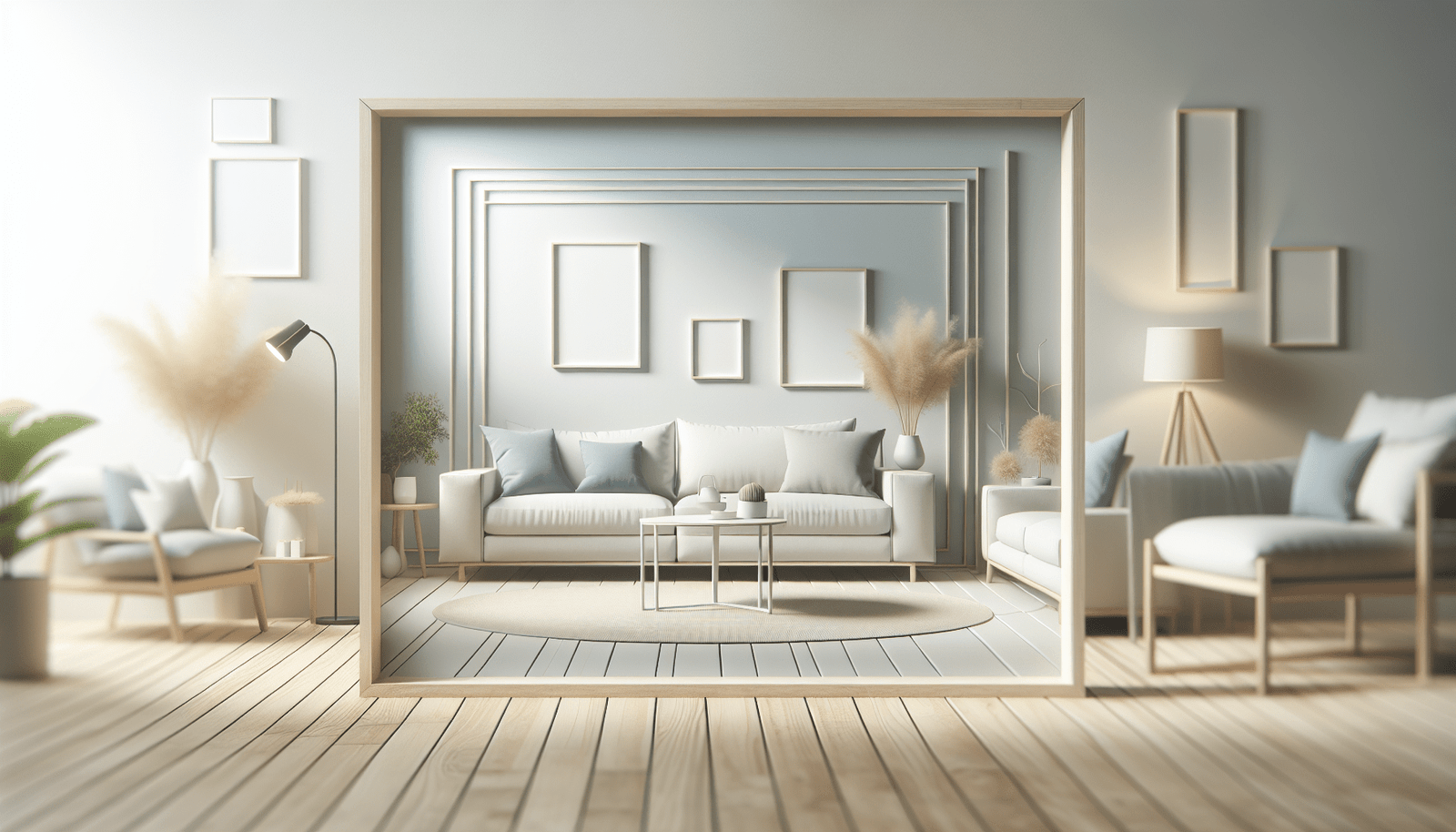Welcome to a guide on creating a tranquil and minimalist oasis in your home. By carefully selecting furniture, decor, and color schemes, you can transform your space into a peaceful sanctuary free from clutter and chaos. This article will provide tips and inspiration for designing a calming, minimalist environment that promotes relaxation and well-being. Whether you’re looking to revamp your entire home or just a single room, incorporating minimalist design principles can help you achieve a soothing and harmonious atmosphere. Let’s explore the art of creating a minimalist space that enhances your overall sense of calm and balance.
How to Create a Calming, Minimalist Space in Your Home
Have you ever walked into a room and immediately felt a sense of peace and tranquility? That feeling can be attributed to the design and layout of the space. In this article, we will explore the art of designing a calming, minimalist space in your home. Whether you are a minimalist at heart or simply looking to declutter and create a more serene environment, these tips will help you achieve the perfect balance of simplicity and tranquility.
Understanding Minimalism: What Is It All About?
Minimalism is more than just a design aesthetic – it is a way of life that focuses on simplicity, functionality, and mindfulness. At its core, minimalism is about removing excess clutter and distractions to create a sense of calm and peace in our surroundings. When it comes to designing a minimalist space, less is more. By embracing minimalism, you can create a space that is both visually appealing and conducive to relaxation and well-being.
The Benefits of a Minimalist Space
Creating a minimalist space in your home offers a wide range of benefits beyond just aesthetics. A clutter-free environment can have a positive impact on your mental health, reducing stress and anxiety levels. In a minimalist space, you are surrounded only by the things that bring you joy and serve a purpose, allowing you to focus on what truly matters in your life. Additionally, a minimalist space can help improve productivity, creativity, and overall well-being.
Decluttering: The First Step to Minimalism
Before you can begin designing a calming, minimalist space, you must first declutter your home. Clutter not only creates visual noise but also weighs us down mentally and emotionally. Take the time to go through each room in your home and assess what items you truly need and love. Donate or discard anything that no longer serves a purpose or brings you joy. By decluttering your space, you are setting the foundation for a minimalist design that promotes relaxation and tranquility.

Choosing a Soft, Neutral Color Palette
When it comes to creating a calming space, the color palette plays a significant role. Opt for soft, neutral colors such as whites, creams, grays, and beige to create a sense of lightness and airiness in your space. Neutral colors have a calming effect on the mind and can help create a serene environment. Avoid bold, bright colors that can be overwhelming and choose tones that promote relaxation and mindfulness.
Furniture Selection: Less Is More
In a minimalist space, furniture should be both functional and aesthetically pleasing. Choose pieces that serve a purpose and have a clean, simple design. Opt for furniture with clean lines, no unnecessary embellishments, and a neutral color palette to create a cohesive look. When it comes to selecting furniture, remember that less is more. Keep only the essential pieces that you need and love, avoiding clutter and excess.
Creating Visual Interest Through Texture
Although minimalism often emphasizes simplicity and clean lines, incorporating texture into your space can add visual interest and warmth. Consider adding elements such as a cozy area rug, soft throw blankets, or textured cushions to create a sense of coziness and comfort. Balance smooth surfaces with tactile elements to create a harmonious and inviting space that appeals to the senses.

Maximizing Natural Light
Natural light has a significant impact on the atmosphere of a space. In a minimalist design, aim to maximize natural light by keeping windows unobstructed and using light, sheer curtains that allow light to filter through. Natural light not only makes a space feel brighter and more spacious but also has mood-boosting benefits. If you have limited access to natural light, consider using artificial lighting sources such as LED bulbs or minimalist fixtures to create a similar effect.
Incorporating Greenery and Nature
Bringing elements of nature into your space can enhance the calming effects of a minimalist design. Consider adding houseplants or fresh flowers to introduce a touch of greenery and life into your home. Plants not only improve air quality but also have a positive impact on mental health and well-being. Choose low-maintenance plants that thrive indoors and complement your minimalist aesthetic to create a connection to the outdoors within your space.
Storage Solutions: Keeping Clutter at Bay
In a minimalist space, clutter should be kept to a minimum to maintain a sense of peace and tranquility. Invest in smart storage solutions such as multi-functional furniture, floating shelves, and hidden storage compartments to keep belongings organized and out of sight. By having designated spaces for every item in your home, you can prevent clutter from accumulating and maintain a clean, minimalist environment.
Mindful Decor: Choosing Meaningful Pieces
When it comes to decorating a minimalist space, every piece should have a purpose and meaning. Avoid filling your space with unnecessary decorations and trinkets, and instead opt for objects that hold sentimental value or bring you joy. Choose decor items that reflect your personality and style while maintaining a cohesive and minimalist aesthetic. By being intentional with your decor choices, you can create a space that feels personal, calming, and reflective of who you are.
Embracing Minimalism Beyond Your Home
Minimalism is not just a design choice – it is a lifestyle that can positively impact all areas of your life. By embracing minimalism beyond your home, you can simplify your daily routines, reduce stress, and focus on what truly matters to you. Consider applying minimalism principles to other aspects of your life, such as your wardrobe, digital devices, and relationships, to create a sense of balance, mindfulness, and well-being.
The Importance of Mindfulness in Design
Mindfulness plays a crucial role in the art of designing a calming, minimalist space. By being mindful of your choices, intentions, and surroundings, you can create a space that fosters relaxation, tranquility, and well-being. Practice mindfulness as you declutter, design, and decorate your space, paying attention to how each choice affects the overall atmosphere of your home. By being present and intentional in your design process, you can create a space that nurtures your mind, body, and soul.
Conclusion: Creating Your Calming, Minimalist Sanctuary
Designing a calming, minimalist space in your home is more than just arranging furniture and choosing decor – it is about creating a sanctuary that nurtures your well-being and promotes tranquility. By following the tips and principles outlined in this article, you can create a space that is both visually appealing and conducive to relaxation. Remember that minimalism is a journey, not a destination, and that creating a peaceful environment takes time, effort, and mindfulness. Embrace the art of minimalism, declutter your space, and design a home that brings you joy, peace, and balance.

